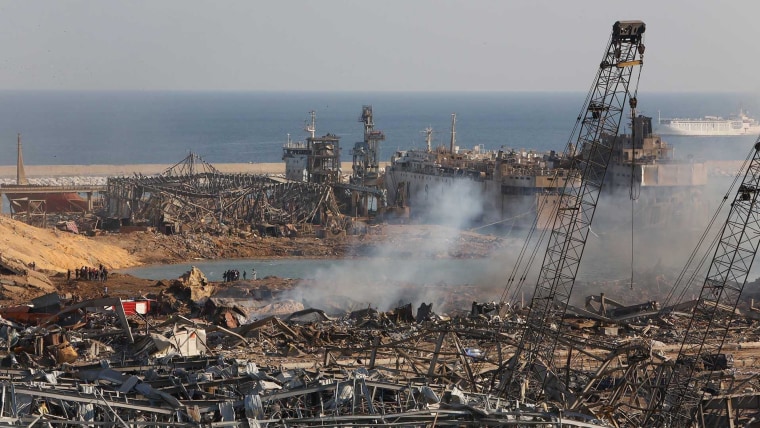Daylight Wednesday exposed the complete devastation wrought by a colossal explosion in Beirut — Lebanon's capital city — less than 24 hours prior.
Aerial footage showed the city ravaged — large buildings flattened and debris-covered streets lined with crushed cars.
At least 100 people have been killed and 4,000 injured, the secretary-general of the Lebanese Red Cross, George Kettana, told LBCI, a local broadcaster, on Wednesday. Those numbers would likely rise as hospitals were packed and rescue workers continued to dig through the rubble.
"There is no word to describe the horror of the catastrophe that occurred in Beirut yesterday," Lebanese President Michel Aoun said during an emergency cabinet meeting on Wednesday, the Lebanese News Agency reported.
Aoun thanked emergency workers and officials and vowed to conduct a full investigation into why a warehouse storing an estimated 2,750 tons of ammonium nitrate at a shipping port exploded, as the cause is still unclear.
The governor of Beirut, Marwan Abboud, also said Wednesday that the cost of the damage to the capital, already under economic pressure, could be between $3 billion and $5 billion, adding that the explosion had made at least 200,000 people homeless.
At a White House briefing on Tuesday, President Donald Trump said the explosion looked "like a terrible attack," although he offered no evidence and said later that the conclusion was based on the presumptions of U.S. generals.
The blast was so big, it could be felt and heard throughout much of the city and as far as the island of Cyprus — about 145 miles away.

